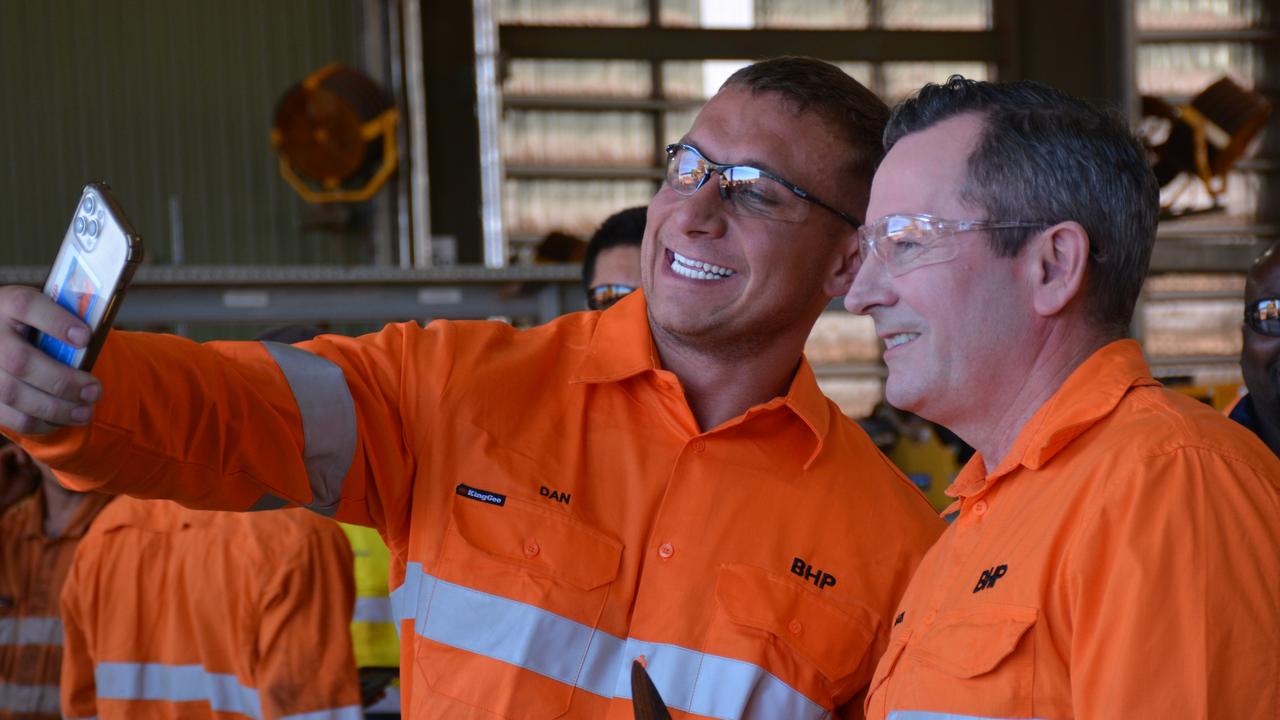A staggering amount of Australia's wealth comes from the plains of Western Australia, and Australia's mining capital leads its east coast cousins in a number of key economic indicators.
Commonwealth Bank data released last month shows Sandgropers in the west lead the country in unemployment, private sector growth and domestic economic activity; the latter does not even take resource exports into account.
But export certainly is.
WA accounts for two-thirds of Australia's resource exports. Chamber of Minerals and Energy WA members paid 20 per cent of the country's corporate income tax last year, the chamber said.
WA has more listed companies than any other state or territory, but only 10 per cent of Australia's population lives there.
Iron ore pays one-fourth of the state government's revenue and 88 percent of royalties come from iron ore.
Chinese demand for the mineral kicked off WA's golden age. The boom got a second wind from the energy transition, which requires rare earth minerals in much larger quantities, Ray da Silva Rosa, a professor at the University of Western Australia's business school, told NewsWire.
“The price of iron ore, driven by demand from China, has remained at much higher levels than anyone was able to predict,” Professor da Silva Rosa said.
“This now decade-long boom is a function of three factors specific to WA: First, the state's geological makeup provides high concentrations of various metals, so if any one or two boils, a release is likely. by the demand for another metal.'
For decades, mining companies have worked out how to mine their resources in very remote locations.
“That's why many (mainly small) mining companies with operations in Africa, Asia and even Europe have their headquarters in Perth,” Professor da Silva Rosa said.
The third key point is high safety standards and technical expertise.
“The mining industry is much more technologically sophisticated than many Australians appreciate,” he said.
“It's not about grabbing a couple of shovels and digging things out of the ground.
A dual advantage for these huge money-making enterprises is that the success of the resource sector has left almost no room for onshore processing.
“It's a version of the Dutch disease,” said Professor da Silva Rosa.
“This means crowding out the development of other sectors when one sector is hugely profitable.”
The state could process more to add value, but there is no incentive for that hugely expensive additional investment.
“The problem we have is that all our resources are fully exploited for resource extraction and the profits are so good that it is prohibitively expensive to develop the infrastructure and expertise for further processing,” said Professor da Silva Rosa.
CommBank's latest quarterly economic report, released in June, said people were choosing to move overseas and interstate to Western Australia.
“WA continues to be the strongest state economy in the country, with economic opportunities attracting interstate and overseas migrants to the state,” the report said.
“West Australian consumers are also seeing the highest level of spending growth in the country.”
Wages are growing 4.2 percent above the national average.
“WA is the only state in the country where the private sector contributes more than 50 per cent of annual economic growth,” the report said.
But then again there is a flip side. While cheaper than Melbourne, Sydney and Canberra, WA house prices are rising.
A healthy rental vacancy rate is about 3 percent. Perth's vacancy rate is a paltry 0.4 per cent.
Firm pressure is driving up rents above the BHP, Rio Tinto and South32 buildings that tower over Perth's skyline.
However, the oligopolies of the big players put the state in a strong position when negotiating with China.
Professor da Silva Rosa said BHP, Rio Tinto and FMG had such dominant market shares and Chinese buyers were much more fragmented.
“So while Chinese interests can organize very hard as a bloc to counter the manufacturers, it's very difficult for them to maintain any pressure on the manufacturers,” he said.
“That means a lot of the value is captured by the manufacturer.”
The removal of Chinese tariffs on wine and lobster has also helped the state's economy.
WA Chamber of Minerals and Energy chief executive Rebecca Tomkinson knows the state is a force.
“WA's role as a strategic part of the global energy future and our position as an economic powerhouse for Australia has not been lost on our trading partners, as evidenced by the recent visits of key international diplomats to Perth,” Ms Tomkinson said.
The Chinese premier visited Australia in June.
He's been all over the country, but of course the handshake photo shoot with Anthony Albanes in Perth was at King's Park with sweeping views of the iconic BHP, Rio and South32 buildings.
Replacement projects are adding more tonnes as WA's iron ore take is expected to climb to 893 million tonnes over the next three years.
“WA has a stable economy and the continued economic and social contribution of our resources sector plays a huge part in that,” Ms Tomkinson said.
